What can be more pleasant to the eye than a beautiful and well-kept plot with lots of colors. That is why every gardener strive to make your spring garden in unique. Every year, flower beds and slides require a large number of works and a permanent search for new plants, and so I want to always admire bright colors from early spring. A beautiful and magnificent carpet of little flowers of Arabis will help create a spring mood and will help embody the most incredible garden compositions.
At first glance, a gentle and fragile flower, and in fact a rather strong and hardy plant Arabis is just an ideal soil-level culture that can be used to form a unique landscape design, creating interesting alpine slides and stony gardens.
In this article, we consider the peculiarities of the cultivation of Arabis, we give a description of the most popular species and varieties of this culture and note the most important moments of planting and leaving the plant.
Botanical description of Arabis and its features
Arabis is a herbaceous flowering plant, which most often refers to perennials, although among the entire variety of species and varieties there are annual representatives. This wonderful plant belongs to the large family of cabbage or debris. Arabis is considered to be a soil plant, which in a short time can grow and strengthen the large sections of the surface of the Earth. For this feature, this culture is used to create bright and unusual garden compositions, alpine slides and rocky gardens, which are the optimal habitat of Arabis. The natural range of growth of this evergreen plant is the mountainous territory of tropical Africa, moderate areas of Europe and Asia, as well as the territory of North America. Arabis is a mountain plant, so in nature it occurs on the slopes of the mountains and rocks high above sea level.
The origin of the scientific Latin name of this fluttering shrub is not known to anyone. However, besides him, this plant has several other names that characterize the peculiarities of the appearance of a small busta. In Russia, Arabis is most often called Reznik. This is due to the fact that the stalks and leaves of many varieties of the plant are covered with rigid versinki, which strongly wound hands while trying to rip the flower. Translated from the Greek word Arabis denotes "grinding", which may also be associated with the presence of a flour flower on the shoots. Today, many gardeners call this plant with a sun bunny, which very accurately transmits brightness and freshness of flowers against the background of a juicy green foliage.
Arabis is known in culture for many years. For the first time, he began to be grown in the gardens and in the yard areas about 200 years ago and since then this gentle flower has not lost its popularity among gardeners. It is still possible to meet in the design of mountaineering, mixboraders, rocaries and rocky gardens. On the Internet, it is possible to meet just a huge number of photos of the Arabis of many years in a variety of garden compositions, which once again prove that this is a unique plant, ideally suitable for the creation of carpet landscapes.
Description of Arabisa:
- Arabis is a perennial herbaceous plant that resistive tolerate winter frosts and does not lose foliage. Therefore, many varieties of this culture are considered evergreen, perfectly withstand temperature differences, difference in lighting and strong long-term cold.
- It is a low-speed soil plant that creates very quickly and rooted that it allows it to create beautiful blooming and fragrant carpets.
- Buckets are formed by fluttering stems, which are independently rooted as the plant is growing.
- The height of the bustice can be a maximum of 15-30 cm, but in the horizontal direction, the stalks are asgraded by 35-40 cm.
- The stalks are covered with small versinks, pretty tough to the touch, which can be loose easily.
- The leaves of Arabis can be small and medium sized, in the form of heart-shaped solid, with a smooth or gear edge.
- The color of evergreen foliage can be different. There are varieties with bright green foliage, with a motley color, which is expressed by silver stains or stripes.
- Sheet plate can be smooth or slightly pubescent.
- The flowering of Arabis starts at about the end of April or in early May and lasts a long time, approximately 4-5 weeks. If there is a cool weather that the plant will delight you longer blossom, which can last up to 8 weeks.
- Effective bushes of Arabis look during abundant flowering. The entire cushion of green foliage is covered with small and delicate flowers, which in diameter can be 1.5 cm.
- Flowers can be simple, consisting of several petals, or terry, collected in small creeping loose inflorescences.
- The color scheme of the Arabis inflorescences is striking, which is represented by pink, lilac, yellow and white shades.
- Another feature of this fluttering plant is the presence of a wonderful sweet fragrance, which exudes flowers during flowering.
- After biting inflorescences on the stems, fruits appear in the form of oblong pods with flat seeds.
- This plant is characterized by good resistance to cold and drought, as well as undemanding to cultivation conditions.
- It is widely used in wild cultivation and for designing garden sites, greenhouses, flower beds and alpine slides.
A variety of types and varieties of Arabis
Arabis is a herbaceous plant for open soil, which is already more than two hundred years happy gardeners with its beauty. Breeders are treated with great work on the removal of new types and varieties of culture that would have completed successfully cultivated. In the nature of this plant there are approximately 120 varieties, which differ in foliage, tinge of inflorescence and the height of the bush. Not all of them are popular, only a few types of Arabis are allocated, which are actively used in landscape design.
Arabis Alpine
- This is one of the most common types of Arabis, which is widely used in Russia.
- The natural area of \u200b\u200bhabitat of this plant is considered to be the highland territories of Europe, North America, there are also specimens and in Eastern Siberia and in the Urals.
- This natural view of Arabis, which has been cultivated for more than 200 years and has long been used to remove new decorative species and varieties.
- It is a perennial herbaceous plant, which in height can reach about 30-35 cm.
- The bush is formed by the reprehensive and branchy shoots that are attached to the surface of the earth with a large number of thin roots.
- The shoots quickly grow up and create lush and dense curtains, covered with small foliage.
- The shoots of Arabis do not die for the winter and are perfectly preserved under the layer of snow.
- This type of Arabis has roasting and stem leaves that differ in the form and parameters. In the roots of the foliage of the oval form of emerald color, the stroke leaves have a swamp-shaped-shaped shape with a sheet plate of gray shade.
- Early spring all the curtains are abundantly covered with small flowerflowers. Blossoms usually begins at the end of April or in early May. It lasts about a month, however, if the weather is cool and cloudy, then bloom will be longer and amount to about a month and a half.
- Flowers are small, in diameter can be approximately 1 cm. On one bush there may be a large amount that sometimes prevents even seeing the foliage.
- All colors are collected in loose-shaped inflorescences.
- Plant flowers can be a white or pink shade.
- In horticulture there are various varieties: Schneeshauba - with white flowers, meeting - with pink flowers, pink - with light pink flowers, Lapland - with white flowers.
Arabis Caucasian
- This type of Arabis has another name - whiteish.
- It is a perennial herbaceous plant, the natural habitat of which is considered the territory of small and Central Asia, the Mediterranean, the Caucasus and Crimea.
- Many scientists nominate the opinion that Arabis Caucasian is the subspecies of Arabis Alpine.
- The bustice is formed by fluttering shoots, the thin roots of which are capable of penetrating deep into the cleft.
- In height, the plant can achieve a maximum of 25-30 cm, and in width - 30-35 cm.
- Plant stems are covered with an oblong shape with a toothed edge. The color of the foliage is gray-green, which is associated with a whitish thick chopping plate.
- The species is characterized by rather large colors, which in diameter reach about 1.5 cm.
- Color shade white.
- Arabis Caucasian is very plenty and quickly grow.
- Popular varieties: Flora Plenio - terry white flowers, Arabis Various - leaves with yellowish border around the edge, Rosabella - with pink flowers.
Arabis Bruovelike
- This is a low-speed plant, which in height can most reach about 10-13 cm.
- The natural habitat of Arabis Bruovoid is considered the territory of Albania, Bulgaria, Greece.
- The sharpening stems are thick covered with small oval leaves, which are covered with whitish villis.
- White shade flowers are assembled in loose shield inflorescences, which consist of about 3-6 pieces.
Arabis is fleeting
- The natural area of \u200b\u200bthe habitat of this type of Arabis is the territory of the countries of the Balkan Peninsula.
- The height of the Arabis, the left reaches about 10-12 cm, is an excellent soil plant.
- The leaves are small, oval shape, are collected in small outlets.
- Thanks to excellent growing qualities, Arabis of this species is often used to strengthen various slopes.
- Flowers of purple shade, which gradually become faded.
- The plant is frost-resistant and unpretentious with cultivation conditions.
Arabis Ferdinand Koburgsky
- The Koburg Arabis is a half-green soil plating, which can be in height to reach about 4-5 cm.
- It grows greatly, in the diameter of bushes can reach about 30 cm.
- Leaves in a green shade plant with white. Pink or yellow border.
- During flowering, a lush pillow of a sheet outlet is abundantly covered with white flowers. Blossom is very long.
Arabis reproduction: the most common ways
Arabis can be multiplied by various ways, it all depends on the specific grade and decorativeness of the plant. The most common methods for obtaining young plants are the following: seed reproduction, reproduction of stalling and dividing the bush. Each option is characterized by their peculiarities and rules that must be taken into account to obtain healthy and abundant flowering plants.
Seed reproduction of Arabisa
- This method is used to reproduce species plants. If you want to grow seedlings of decorative varieties, for example, with terry flowers, then with the help of seeds you will not get the desired plant. With seed reproduction, maternal signs are not transmitted.
- Seeds of Arabis without problems can be purchased in various garden centers or flower shops. If the handsome Arabis is already growing on your site, you can try to collect seeds yourself.
- On the Internet you can find a huge number of photo landing photos with seeds. There is nothing complicated here, and the sequence of actions is the same as in many other blooming herbaceous plants.
- Directly into the soil seeds are necessary to sow autumn under the winter, while the seeds are seeded into containers in early spring, approximately in April.
- In the soil, seeds are plugged at about half a centimeter, after which it is worth waiting for their shoot.
- After the appearance of strong seedlings with a pair of leaves, the young plants of Arabis are picked at a distance of about 35-40 cm from each other.
- When using a seaside method, it is necessary to prepare containers with soil mixture, which should consist of garden soil and sand.
- Be sure to warm the ground before sowing, after which the seeds are plugged and covered on top of the film to increase the germination.
- Temperature for germination should be approximately 20 degrees.
- After about 20-25 days, the seedlings will germinate and the shelter can be removed. When the first leaves appear, the seedlings can be started hardening. If you are going to use Arabis as a soil plants, you do not need to dive seedlings.
- Seedlings after disembarking will begin to bloom in the second year.
Reproduction of Arabis division bush
- In this way, only terry and other decorative varieties of Arabis are breeding. This allows you to preserve all the maternal signs of the plant.
- To divide the bush of Arabis is necessary only after the achievements of 3 or 4 years. Young bushes are not recommended to share.
- It is necessary to carry out such a process at the end of summer or the beginning of autumn after the end of the flowering period.
- To do this, it is important to carefully remove the bush from the soil and slightly shook the soil with the roots.
- From one adult bustle, you can get up to 20 young plants.
- With the help of a sharp knife or a secaterator, the Arabis bush need to be cut to the desired number of deteen.
- At the same time, it is important to immediately treat all sections of sections with crowded coal so that they heal faster.
- On the prepared area, the landing wells are made at a distance of about 35-40 cm from each other and lumps the decenes, after which they are plenty of them.
The reproduction of Arabis Cherenkovania
- This method of reproduction of Arabis is also used to breed decorative culture varieties.
- Harvesting the planting material is recommended after the end of the flowering of Arabis.
- You can use the leaves together with the heel from which the roots will appear. To obtain such a landing material, the sheet must not be cut off, but pull off, slightly pulling on itself. So you will get a sheet with a piece of cortex, which is called "heel".
- As a cutlets, you can use the top shoots. To obtain them at the end of bloom, it is necessary to cut the tip of the escape length about 10 cm. After that, all the lower leaves are removed.
- All cuttings are planted in a greenhouse or a greenhouse at an angle, after which the beds are poured and fried.
- The cuttings are recommended to cover with a film or separately by plastic bottles every seedling.
- Daily care is to maintain the humidity of the substrate, the ventilation of the cuttings, the removal of condensate.
- When the leaves again become elastic, the cuttings can be planted at a permanent place.
Preparation before landing Arabisa in open ground
Arabis is an unpretentious and non-capricious plant that can grow in any conditions. However, decorative garden forms still require a proper relationship, and therefore thorough preparations before landing, especially if the landing of Arabis is done for the first time.
Selection of varieties and planting material Arabis
- For landing on the territory of Russia, it is recommended to use the most popular and common form of plants - Arabis Alpine and Arabis Caucasian. Today there are many varieties of these species that are zoned and adapted to climatic conditions.
- The choice of a specific variety should also be founded on the future garden composition. For the alpine hills of rocky gardens, you can choose the lowest plants whose height is about 10-13 cm. For a single landing, you can buy average varieties.
- The planting material you can grow independently, and you can buy ready-made seedlings in containers in any garden center or agrofirma that are professionally engaged in breeding plants.
- Before buying, it is recommended to carefully examine seedlings. They should not be damage, yellow or rotten leaves, signs of diseases or pests.
Choosing a place to land Arabis
- The choice of place is an important condition for the growth of a beautiful and plenty of flowering plants.
- Arabis prefers to grow on open and well-lit plots, but without direct sunlight.
- The selected plot should be frozen well.
- If you wish, you can land a seedling of Arabis in a shady spot, however, the color of its leaves and flowering will be more scanty.
- For planting this soil plate, you can pick up small slopes and hills, artificially created alpine slides are suitable.
- It is impossible to place arabis in lowlands, since these plants do not maintain the stagnation of water from the roots.
Landing Arabis in Open Soil - Instructions
- In the open soil, Arabis seedlings are recommended to land in the spring, but not earlier than May.
- Previously, the soil on the selected area must be carefully swing and remove all weeds. For the full growth of this plant, practically any soil is suitable, for example, the tricky earth with sand.
- It is important to ensure good drainage, as the plant does not make a stagnation of moisture in the roots. To do this, you can add large river sand or small stones to each well.
- Next, you need to prepare landing wells at a distance of about 30 cm from each other.
- If you want as a result of getting a beautiful blooming carpet, then 2-3 saplings can be placed in one well.
- The soil around the seedlings gently compact and add a little full mineral fertilizer.
- At the end of the landing, young plants should be abundantly pouring.
How to care for the Arabis in the open soil
Arabis care is not much difficult, because it is not for nothing that this plant is known among the gardeners with his unpretentiousness. Properly putting good and healthy seedlings, in the future this plant practically will not require the cost of strength and time on your part.
- Watering. Arabis is considered a drought-resistant plant, therefore it does not endure excessive moisture. This is due to the fact that the root system is rather large and is able to extract moisture itself. Water this plant is recommended in the hottest periods, while observing the measure. Watering mode must be approximately following - once a week is a small amount of water. With an excess of moisture, the root system can start rotting.
- Loosening and mulching. Arabis prefers to grow on loose and light soil, so regularly after watering it must be loosened to ensure oxygen access to roots. This plants prevent weeds to develop, so they must be deleted until the Arabis is completely strengthened.
- Trimming. An important step in the care of a grimaceous plant is cropping rapidly growing shoots. This will allow to maintain the decorative of the cookistic. It is also recommended to regularly trim the blurred inflorescences in order to strengthen the growth of others.
- Stealing Arabis. This plant is a resident of the mountain slopes, so unpretentiousness is laid by nature. However, it is possible to make fertilizers to obtain a beautiful plant with abundant blossoms. You can do it before the start of flowering. As a feeding, you can use complex mineral fertilizers and humus.
- Preparation for winter. Before you begin to prepare for winter, you can collect seeds of this plant. To do this, immediately after the first frosts on a sunny day, you need to cut off a pair of inflorescences and dry them. Extract seeds and store in paper package. Before the onset of cold weather, all shoots are cut off, leaving only small penets, and then they are covered with foliage and sweet.
Photo of Arabisa
If you want to create beautiful garden compositions on your site in the form of blooming carpets or peculiar flower rivers, then you will certainly pay your attention to Arabis, landing and care for which in the open ground is even a novice gardener.

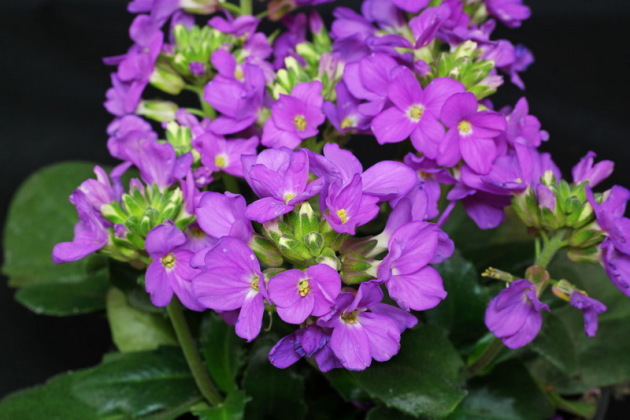
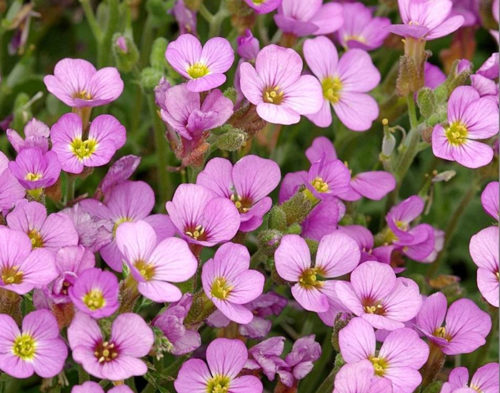
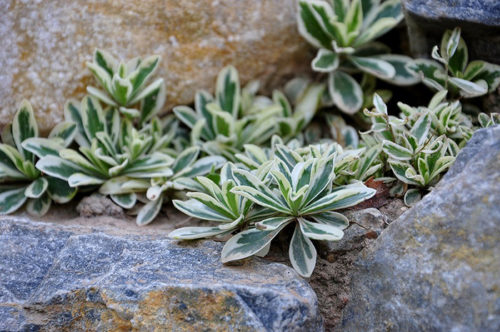
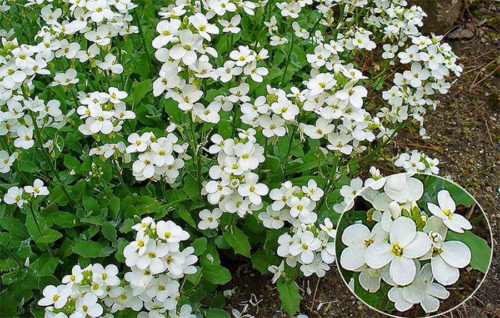
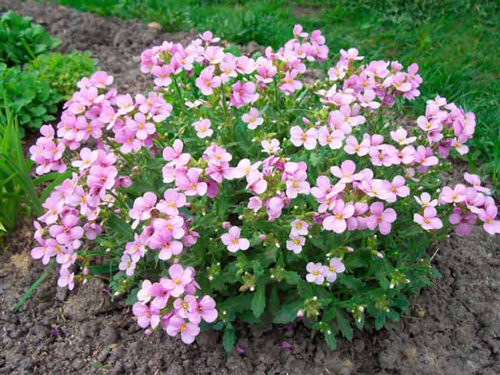
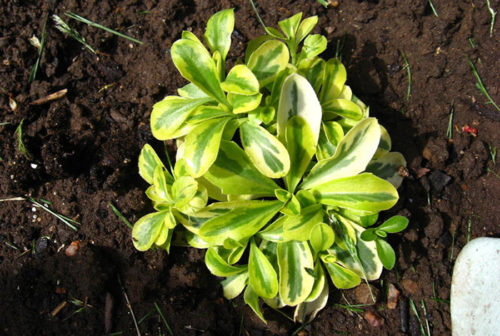
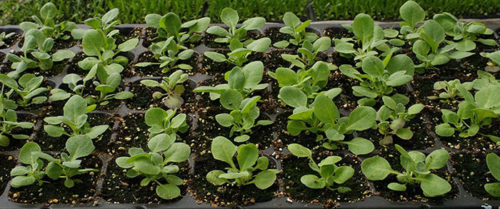
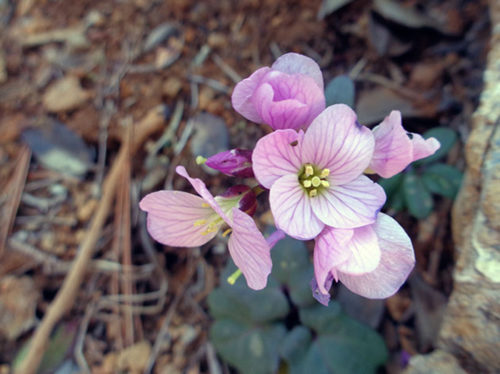
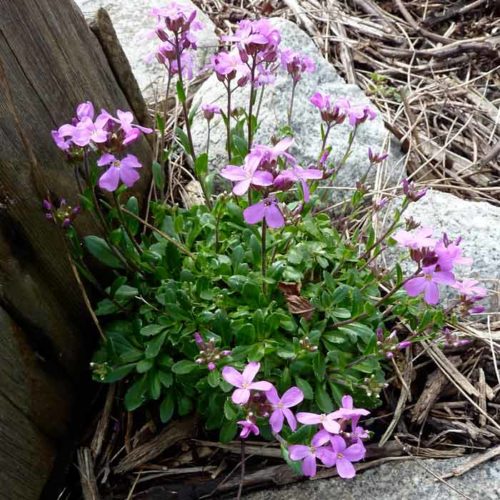
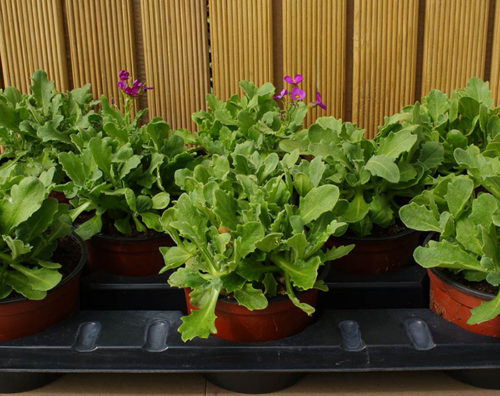
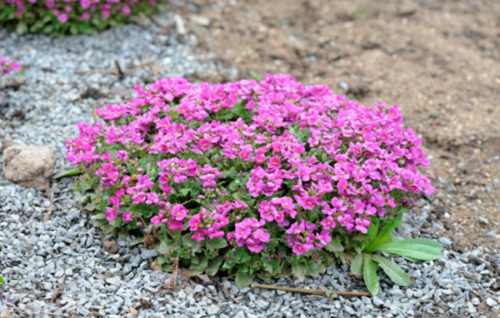
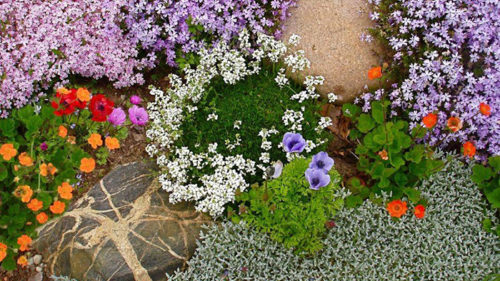
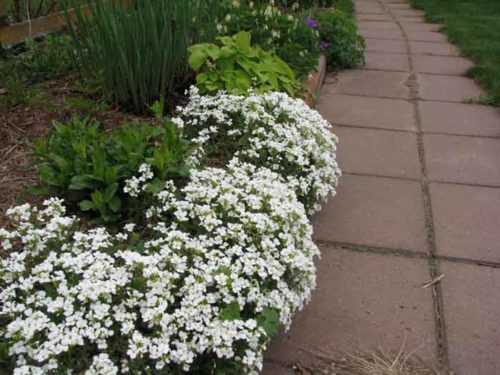
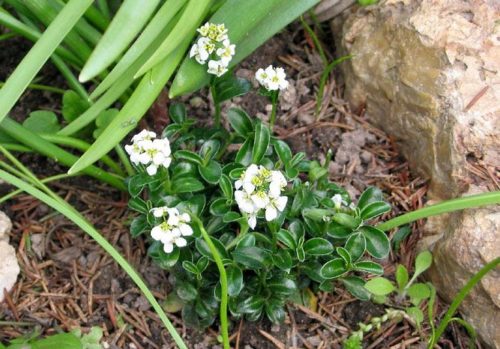
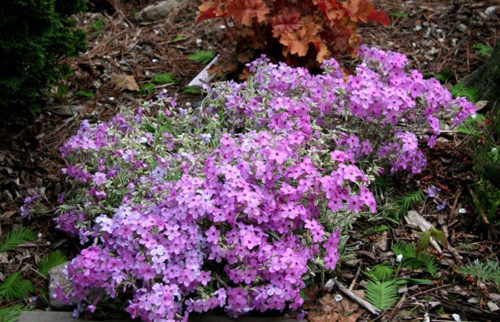
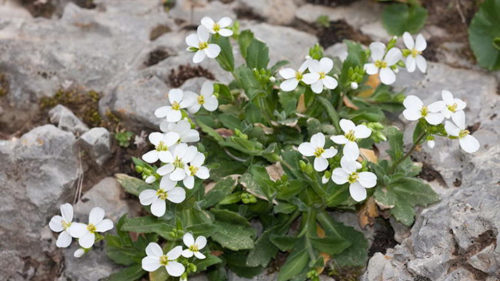
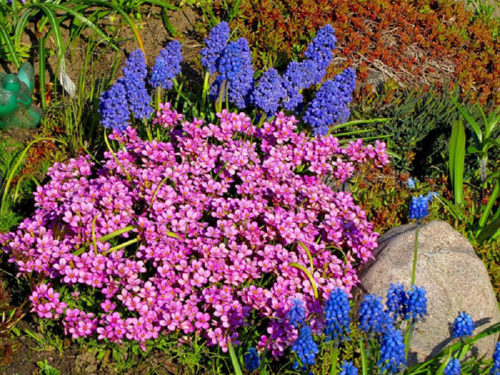












 Start a discussion ...
Start a discussion ...